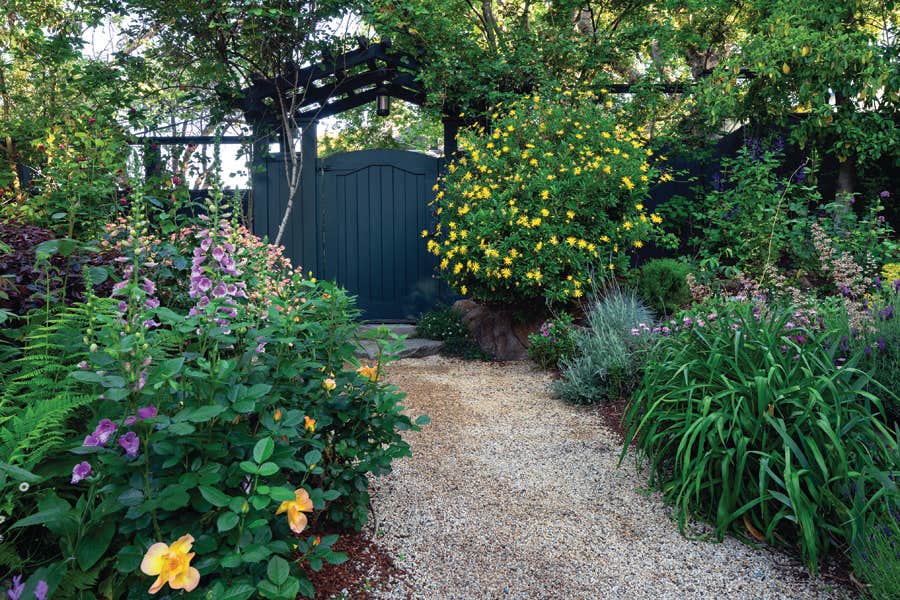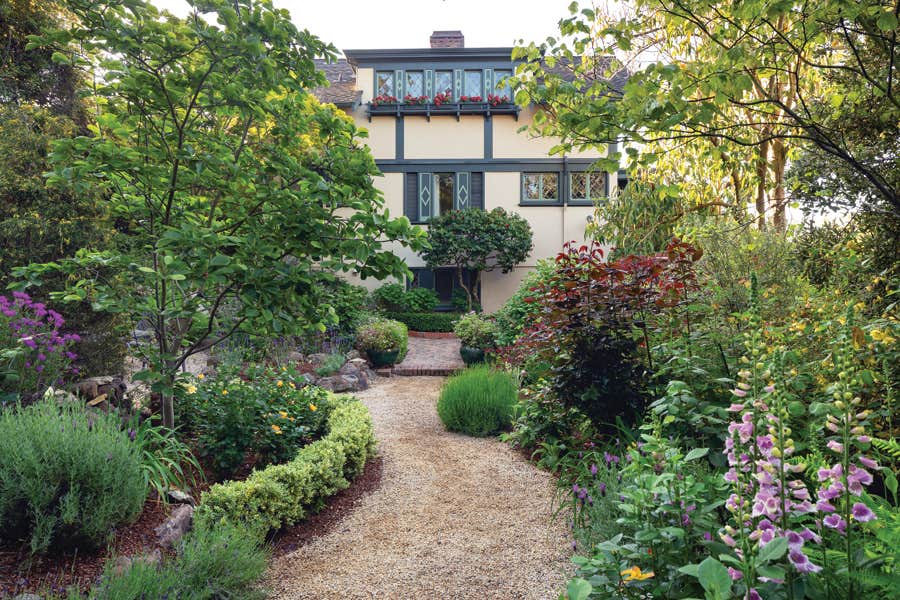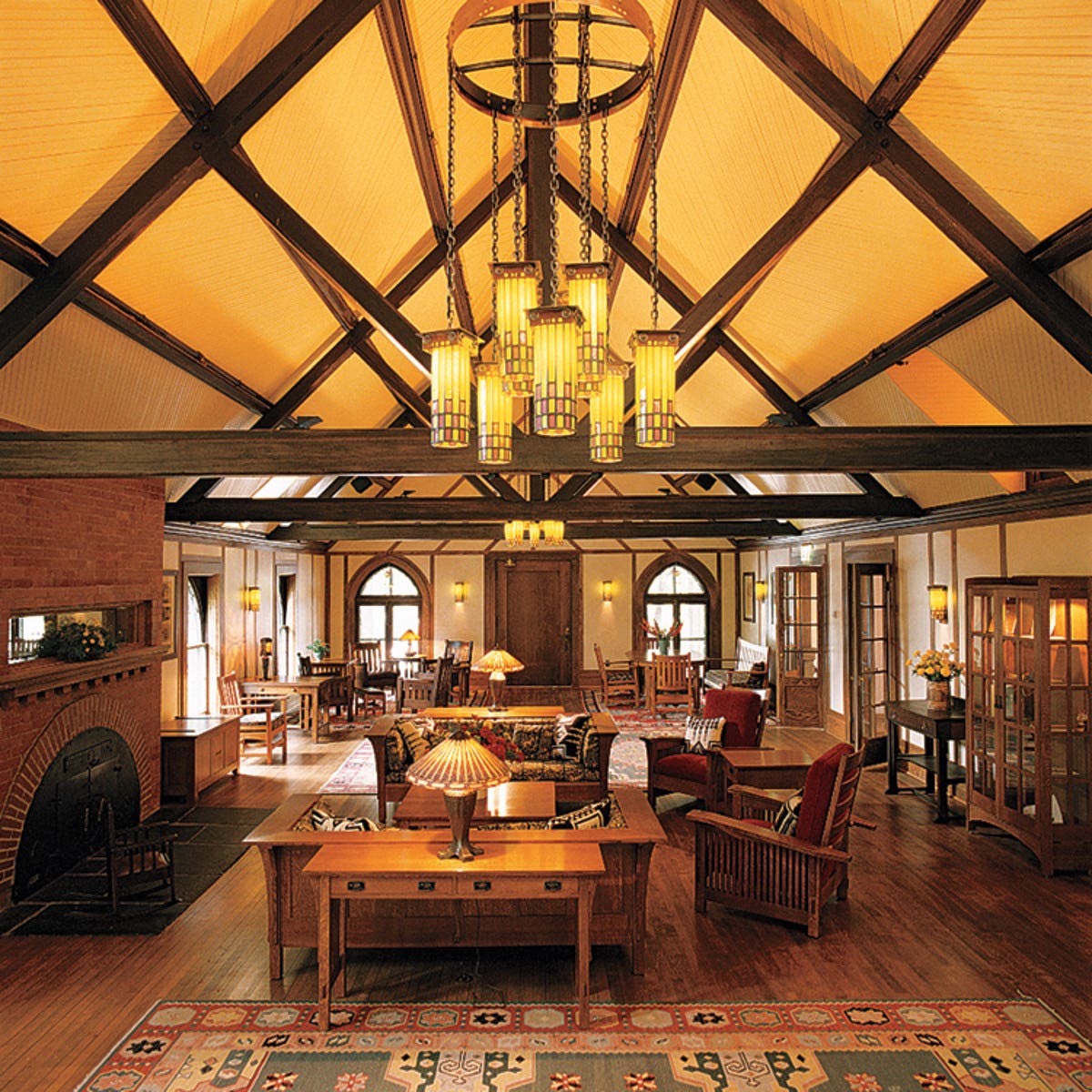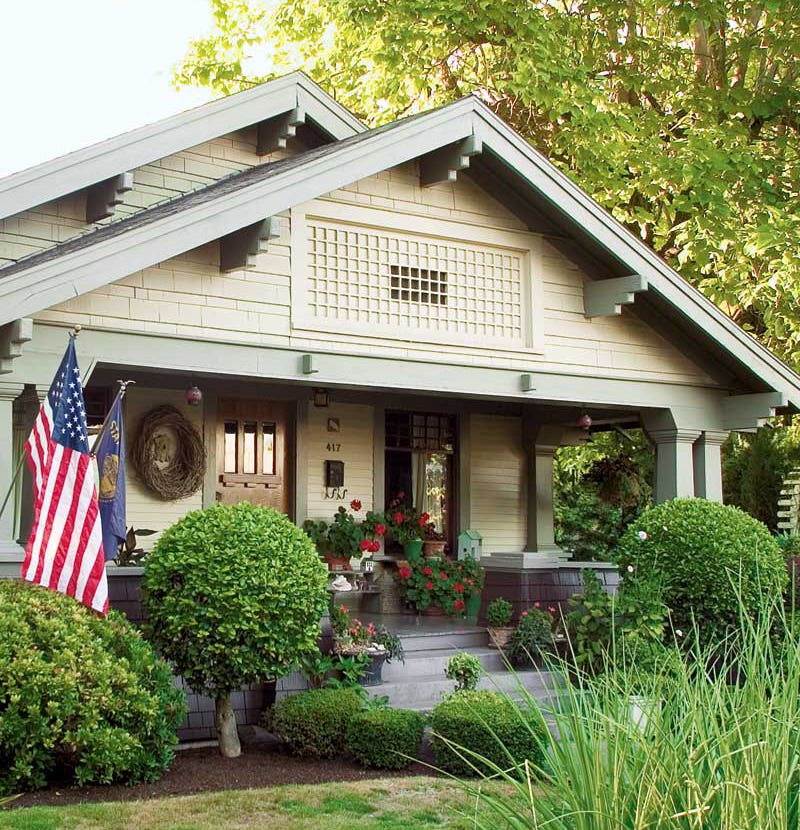An English Garden in Montgomery
A landscape designer imagines boxwood and favorite cottage flowers in an English garden created for a Tudor Revival house in Montgomery, Alabama.
The design for Charlotte DeVore’s cottage garden in the Old Cloverdale neighborhood of Montgomery began in friendship. Across the street from Charlotte’s small Tudor house lived artist and landscape designer Mark Montoya, who’d been eyeing her overgrown English garden while riding by on his bicycle. Mark says, “We had never met face to face but I could see that her camellias and azaleas needed love.” As Charlotte tells it: “Mark walked into my yard with a pair of clippers on the day I met him 16 years ago, and asked if he could prune some of my bushes. I had the good sense to not be offended.”
The Old Cloverdale community is a local historic district; inspired by the English Garden Cities movement, it was created as a planned garden suburb in the 1890s. Designed by the British landscape architect and Ruskin disciple Joseph Forsyth Johnson, the place has an Old World feel, with gently curving streets lined with towering magnolia trees and old pines. Cloverdale was intended to transport residents into the world of the past—in particular, a British past—with Tudor-style houses, some with thatched roofs. Scott Fitzgerald and his wife, Zelda, whose hometown this was, lived in a Cloverdale bungalow in 1931, Scott staying only briefly before being called away to Hollywood, and Zelda remaining to write her novel Save Me the Waltz and paint ethereal watercolors of the blooms she grew in her garden.
In Cloverdale, most gardens take their cue from the architectural style of the houses, creating a harmonious whole. “I think that my favorite thing about my garden is that it enhances my house with the same kind of cottage-style look,” Charlotte says. But when Mark began helping her, the plot had no structure or shape; it contained just a broken fountain in an arched brick wall and three bedraggled boxwoods. The plan he devised provided structure in the form of rough stone walls and clipped hedges of Japanese box.
Within these partitioned confines or “rooms,” plants in naturalistic clumps were allowed to thrive and overspill their boundaries, even go a bit wild. Mark left a small patch of green lawn and filled the rest of the yard with meandering stone paths and assorted flowering shrubs including that Southern favorite, azalea. Trees planted along the edges of the garden provide privacy, and include October Glory maples, Italian cypress, and Oakland holly, along with a giant magnolia.
Mark also had to deal with the extremely hot Alabama summers and copious precipitation throughout the year. “The biggest challenge with this lot was its lack of drainage,” Mark says. “When there’s a big rain, water floods in from the two lots behind, and pours in off a tennis court.” To fix that, Mark added “close to 100 Japanese boxwood, all one- gallon size, at various times. The placement of the boxwood channels the water into a drain and down the drive.”
Box is the signature plant of many traditional Southern gardens; it is easy to grow in the hot climate and is a good companion plant, a backdrop for Charlotte’s colorful perennials. Boxwood also creates a link with the past, recalling Tudor England and the Arts & Crafts-period revival of this traditional hedging plant. Charlotte and Mark planted box topiary in urns, a practice also resurrected by the Arts & Crafts movement because it harks back to medieval times.
Along the side of the house, Mark paved a courtyard patio with old bricks. To counter the hot sun and rain, trim khaki-striped canvas awnings were added above the French door and windows. A salvaged ironwork gate was found for the patio entrance and now has a wreath of rosette succulents in lavender, blue, and sea green; the plants seem to grow on air but actually have a netting of soil and moss attached behind them. “That wreath has made it through a whole year and a half,” Charlotte says. “I put it inside my house on freezing nights.”
Charlotte chose cottage favorites such as foxgloves, blush-pink ‘Keira’ and ‘Lady Banks’ roses, and garden pinks (dianthus), which appear in medieval books and engravings of gardens. More exotic plantings include a loquat tree, numerous succulents, and Jasminum nudiflorum (“naked flowers”), an odd shrub with waxy, bright yellow flowers appearing in the winter months. Commonly called winter jasmine and valued as one of the few plants that flower from November until March, it has been trained to climb over the rock wall. There are several Osmanthus fragrans or tea olive trees, which, with a haunting fragrance and flowers that can be infused with black tea leaves to make a scented tea, are found in many Montgomery gardens.
Several well–placed ornaments punctuate the garden: an old wooden column that Mark “drug out from under an old house,” a statuary remnant of a woman’s head, and a birdbath for a water feature. Ironwork details were carefully chosen including black lanterns, an old cast bell decorated with cherubs, and strap hinges on the front door, all blending with the original railings.
Steve Gross & Susan Daley are photographers specializing in architecture, interiors, gardens, travel and lifestyle. They shoot assignments and produce stories for numerous magazines as well as photograph projects for architects and designers. Their books explore the rich architectural and cultural heritage of the many regions of the U.S.








